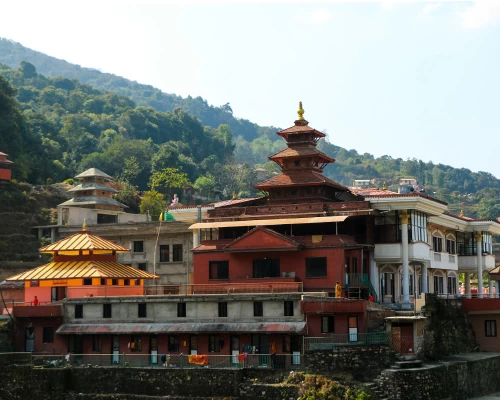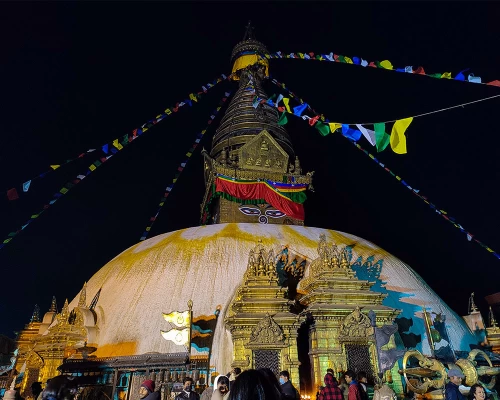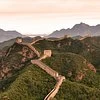Tour highlights - Nepal Round Tour
- Visit Kathmandu Durbar Square, a UNESCO World Heritage Site, to explore the ancient palaces, courtyards, and temples.
- Visit Bhaktapur Durbar Square, a UNESCO World Heritage Site.
- Visit the World Peace Pagoda for panoramic views of the Annapurna Range in Pokhara.
- Enjoy jungle activities like elephant safari, canoeing, and nature walks in Chitwan.
- Relax and reflect in the peaceful atmosphere of this UNESCO World Heritage Site in Lumbini.
A 10-night 11 11-day round tour in Nepal can cover a variety of destinations and experiences, allowing you to explore the rich cultural, historical, and natural diversity of the country. Nepal isn't just renowned for its treks and adventure activities; it's also celebrated as a destination for breathtaking tours worldwide. This eleven-day and ten-night tour of Nepal encompasses the key attractions such as Kathmandu, Pokhara, Chitwan, and Lumbini.
Commencing upon arrival in Kathmandu, a city known as a cultural melting pot and the country's cultural metropolis, our Nepal tour unfolds over two days to explore the Kathmandu Valley. The itinerary includes Kathmandu Durbar Square, a UNESCO World Heritage site at the city's heart; the Swayambhunath stupa, located three kilometres west of Kathmandu, popularly known as the 'monkey temple'; and the renowned Pashupatinath temple, a significant Hindu pilgrimage site situated 5 kilometres east of Kathmandu on the banks of the sacred Bagmati River.
Continuing our exploration, the tour features the ancient and colossal Boudhanath Stupa and Patan Durbar Square, the oldest city in the Kathmandu Valley, situated 7 kilometres southeast of Kathmandu. Concluding the Kathmandu leg is a visit to Bhaktapur, a unique and ancient town divided into 24 traditional localities covering an area of 5 square kilometres.
Moving on to Pokhara, a picturesque paradise for travel enthusiasts situated 200 kilometres west of Kathmandu, the city offers breathtaking views of snow-capped mountains and a crystal-clear lake in a sub-tropical setting, making it a haven for nature lovers.
Lumbini, the birthplace of Lord Buddha, is a significant stop on our tour. This revered site is not only a pilgrimage for Buddhists but also known for its beautiful architecture, including the Maya Devi temple, Ashok stupa, Lumbini Buddha garden, and more than 22 monasteries from different countries, earning it a spot on UNESCO's World Heritage Monument List.
Chitwan, renowned for its jungle activities and cultural aspects of local life, boasts the oldest National Park, Chitwan National Park. Here, our tour allows encounters with diverse wildlife, including one-horned rhinos, deer, tigers, bears, and elephants. The day concludes with a captivating sunset view from the Rapti River bank and a traditional Nepali cultural dance at the hotel.
This itinerary provides a mix of cultural, historical, and natural experiences, showcasing the diverse aspects of Nepal.
At Himalayan Joy Adventure, we tailor our itineraries to suit our clients' time frames in Nepal, ensuring flexibility. This Nepal tour itinerary can be customized based on your availability. For those interested, a post-tour trek to Ghorepani Poon Hill is an option, offering one of Nepal's easiest and shortest trekking experiences.








